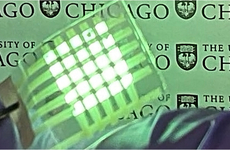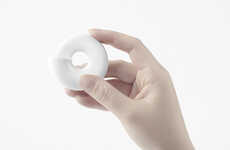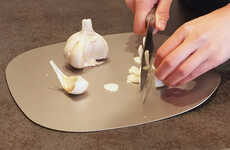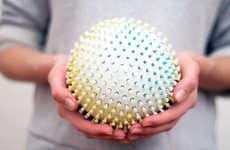
Researchers Create the Future of Flexible, Bendable Gadgets
Meghan Young — June 25, 2015 — Tech
References: umich.edu & fastcodesign
Kirigami is the name of a Japanese paper-cutting technique that is currently being used in the technology industry. Researchers from the University of Michgan, who are being led by Professor Nicholas Kotov, have found a way to apply this Japanese paper-cutting technique to the creation of circuit boards that will eventually be used to yield flexible and bendable gadgets.
Opening up possibilities for implantable medical devices and unbreakable gadgets, this Japanese paper-cutting technique is very exciting. Fast Co Design writes, "The first prototype of the kirigami stretchable conductor consisted of tracing paper covered in graphene nanotubes. The layout was very simple, with cuts like rows of dashes that opened to resemble a cheese grater. Later concepts, though, were more complicated." It will be interesting to see how it progresses.
Opening up possibilities for implantable medical devices and unbreakable gadgets, this Japanese paper-cutting technique is very exciting. Fast Co Design writes, "The first prototype of the kirigami stretchable conductor consisted of tracing paper covered in graphene nanotubes. The layout was very simple, with cuts like rows of dashes that opened to resemble a cheese grater. Later concepts, though, were more complicated." It will be interesting to see how it progresses.
Trend Themes
1. Kirigami Circuit Boards - Using Kirigami paper-cutting technique to create bendable and flexible gadgets through circuit boards.
2. Stretchable Conductors - Utilizing graphene nanotubes and row of dash cuts in kirigami circuit boards to produce stretchable conductors for implantable medical devices and unbreakable gadgets.
3. Graphene-based Technologies - Exploring the potential of graphene nanotube as an essential material for future electronics and biomedical applications in kirigami-inspired technologies.
Industry Implications
1. Electronics - Integrating kirigami-inspired circuit boards for the production of flexible and bendable gadgets within the electronics industry.
2. Biomedical Engineering - Innovating kirigami-inspired stretchable conductors made of graphene nanotubes for implantable medical devices within the biomedical engineering industry.
3. Material Sciences - Developing and exploring potential applications of graphene nanotube, as a material for future technological advancements in kirigami-inspired technologies within the materials science industry.
5
Score
Popularity
Activity
Freshness























